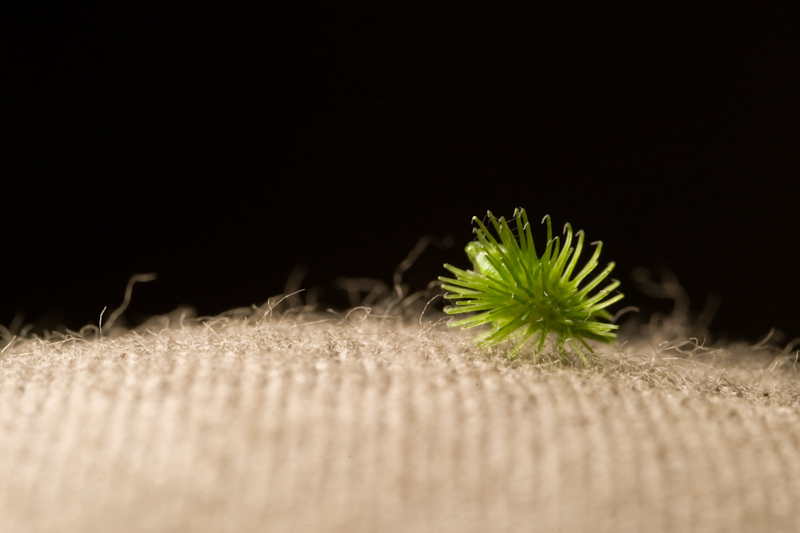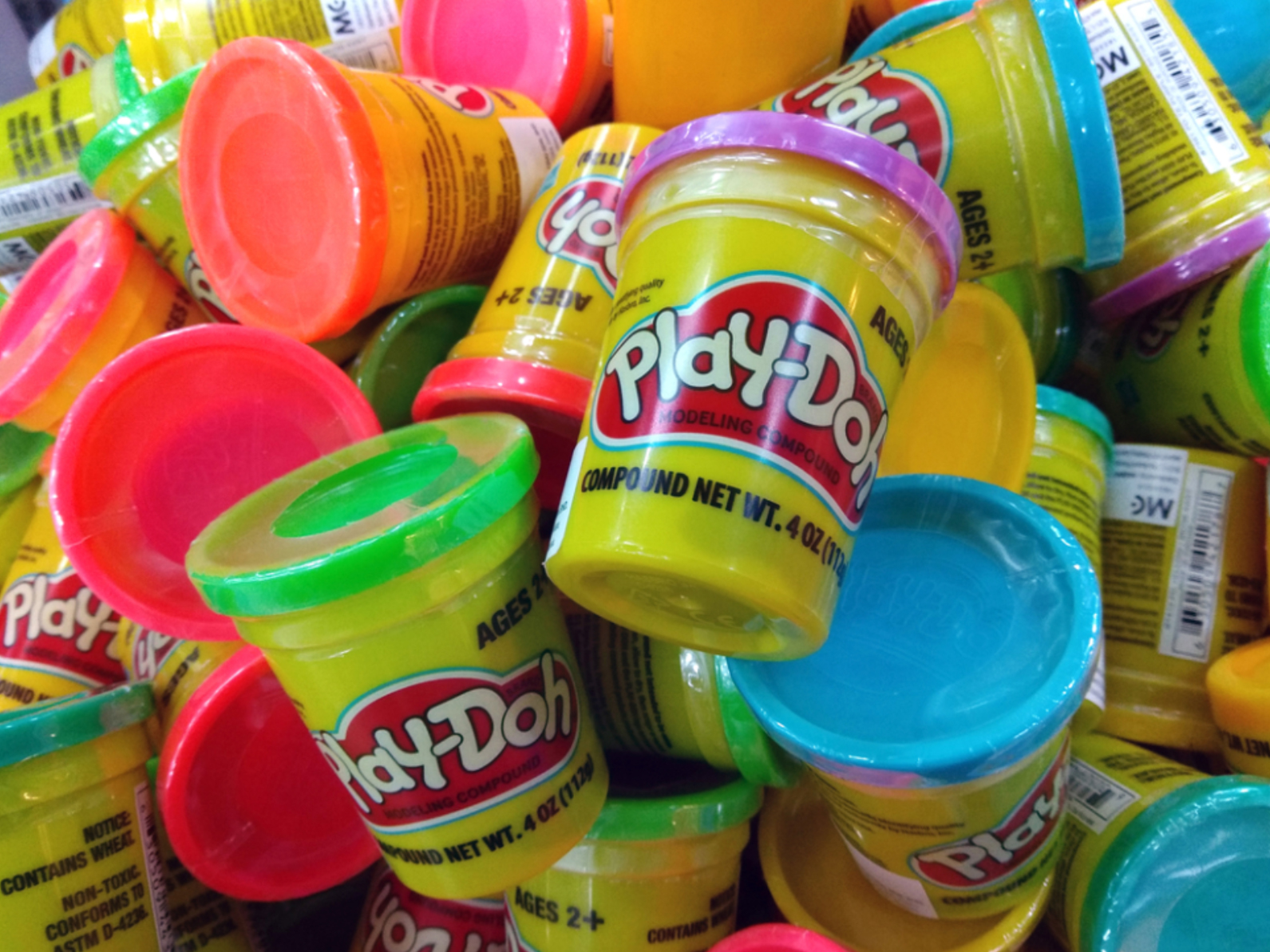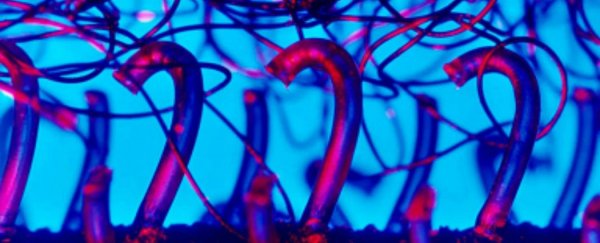Some scientific discoveries come about after painstaking, goal-oriented lab work finally yields the result that a researcher is trying to find.
But many of the most incredible discoveries in world came about when someone found something they weren't looking for.
In some cases, these are the result of a true accident. Lucky accidents have allowed people to discover unexpected but useful side effects from drugs, which is what happened with Viagra.
Saccharine - the artificial sweetener in "Sweet'N Low" - was found by a Russian chemist who forgot to wash his hands after a days work.
Perhaps more often, world-changing discoveries are the result of a creative mind realising that a material or invention could be repurposed into something incredible.
In many of these cases, the researchers behind the discovery wouldn't call their finding a true "accident," since it took a prepared mind to follow through and turn that discovery into something useful. But what was found wasn't what was being looked for in the first place.
Desperation or the need to figure out a new use for a product can always help too, as it did for the inventor of a dough intended to clean soot from people's homes. A switch away from coal to gas removed the need for such a cleaning clay.
But it turns out that shapeable clay makes a great and profitable toy: Play-doh.
None of these "accidents" would been the world-changing discoveries they are without the right person there to recognise their value. But they show that the best innovations can come from the unexpected.
1. The microwave
In 1946 Percy Spencer, an engineer for the Raytheon Corporation, was working on a radar-related project. While testing a new vacuum tube, he discovered that a chocolate bar he had in his pocket melted more quickly than he would have expected.
He became intrigued and started experimenting by aiming the tube at other items, such as eggs and popcorn kernels. Spencer concluded that the heat the objects experienced was from the microwave energy.
Soon after, on October 8, 1945, Raytheon filed a patent for the first microwave.
The first microwave weighed 750 pounds (340 kg) and stood 5′ 6″ (168 cm) tall. The first countertop microwave was introduced in 1965 and cost US$500.
2. Quinine
Quinine is an anti-malarial compound that originally comes from tree bark. Now we usually find it in tonic water, though it's still used in drugs that treat malaria as well.
Jesuit missionaries in South America used quinine to treat malaria as early as 1600, but legend has it that they heard that it could be used to treat the illness from the native Andean population - and that the original discoverer found these properties with a stroke of luck.
The original tale involved a feverish Andean man lost in the jungle and suffering from malaria. Parched, he drank from a pool of water at the base of a quina-quina tree.
The water's bitter taste made him fear that he'd drank something that would make him sicker, but the opposite happened. His fever abated, and he was able to find his way home and share the story of the curative tree.
This story isn't as well documented as some others, and other accounts for the discovery of quinine's medicinal properties exist, but it's at least an interesting legend of an accidental world-changing finding.
3. X-rays
In 1895, a German physicist named Wilhelm Roentgen was working with a cathode ray tube.
Despite the fact that the tube was covered, he saw that a nearby fluorescent screen would glow when the tube was on and the room was dark. The rays were somehow illuminating the screen.
Roentgen tried to block the rays, but most things that he placed in front of them didn't seem to make a difference.
When he placed his hand in front of the tube, he noticed he could see his bones in the image that was projected on the screen.
He replaced the tube with a photographic plate to capture the images, creating the first X-rays.
The technology was soon adopted by medical institutions and research departments - though unfortunately, it'd be some time before the risks of X-ray radiation were understood.
4. Radioactivity
In 1896, intrigued by the discovery of X-rays, Henri Becquerel decided to investigate the connection between them and phosphorescence, a natural property of certain substances that makes them give off light.
Becquerel tried to expose photographic plates using uranium salts that he hoped would absorb "x-ray" energy from the sun. He thought he needed sunlight to complete his experiment, but the sky was overcast.
Yet even though the experiment couldn't be completed, he developed the plates and found that the images showed up clear anyway – the uranium had emitted radioactive rays. He theorised and later showed that the rays came from the radioactive uranium salts.
5. The fastening system that we know by the brand name "Velcro"
 Velcro seed. (kalyanvarma/Wikimedia Commons)
Velcro seed. (kalyanvarma/Wikimedia Commons)
In 1941, Swiss engineer George de Mestral went for a hike in the Alps with his dog. Upon returning home, he took a look at the small burdock burrs that stuck to his clothes, and noticed that the little seeds were covered in small hooks, which is how they became attached to fabric and fur.
He hadn't set out to create a fastening system, but after noting how firmly those little burrs attached to fabric, he decided to create the material that we now know by the brand name Velcro.
It became popular after it was later adopted by NASA, and became commonly used on sneakers, jackets, and so much more.
6. Sweet'N Low
Saccharin, the artificial sweetener in "Sweet'N Low", is around 400 times sweeter than sugar. It was discovered in 1878 by Constantine Fahlberg, who was actually working an analysis of coal tar at the Johns Hopkins University lab of Ira Remsen.
After a long day in the lab, he forgot to wash his hands before eating dinner. He picked up a roll, and noticed that it seemed sweet - as did everything else he touched.
He went back to the lab and started tasting compounds until he found the results of an experiment combining o-sulfobenzoic acid with phosphorus chloride and ammonia (tasting random chemicals is not generally considered a safe lab practice).
Fahlberg patented saccharin in 1884 (leaving Remsen's name off the patent, despite the fact that they co-published the first paper on the material) and began mass production. The artificial sweetener became widespread when sugar was rationed during World War I.
Tests showed that body couldn't metabolize it, so people didn't get any calories when eating saccharin.
In 1907 diabetics started using the sweetner as a replacement for sugar and it was soon labelled as a noncaloric sweetener (for dieters).
7. The Pacemaker
In 1956, Wilson Greatbatch was building a heart rhythm recording device. He reached into a box for a resistor to complete the circuitry, but pulled out the wrong one - it wasn't quite the right size.
He installed the ill-fitting resistor and noticed that the circuit emitted electrical pulses. It made him think of the timing of the heartbeat.
Greatbatch had previously thought that electrical stimulation might be able to stimulate the circuitry of the heart if there was some kind of breakdown there - this new device made him think it might be possible to create a version small enough to actually provide this stimulation.
He began to shrink his device and on May 7, 1958, a version of his pacemaker was successfully inserted into a dog.
8. LSD
Albert Hofmann studied Lysergic acid, a powerful chemical that was first isolated from a fungus that grows on rye, which he first synthesized in 1938. These chemicals he studied were going to be used as pharmaceuticals, and many derivatives of them are still used today.
In 1943, he accidentally tasted his creation.
While working with this chemical, Hoffmann reported feeling restless and dizzy.
He went home to lay down and "sank into a kind of drunkenness which was not unpleasant and which was characterised by extreme activity of the imagination," according to his own notes.
"As I lay in a dazed condition with my eyes closed (I experienced daylight as disagreeably bright) there surged upon me an uninterrupted stream of fantastic images of extraordinary plasticity and vividness and accompanied by an intense, kaleidoscope-like play of colours," he continued.
Intrigued, he intentionally dosed himself with the drug on April 19, 1943 to find out its effects, and then rode his bicycle home.
It was the first planned experiment with LSD - but not the last.
Like many other inventors, he didn't characterise his discovery as an accident - it started with one, but he's the one who decided to follow through with his findings.
9. Play-doh
 Play-Doh (Shutterstock/TY Lim)
Play-Doh (Shutterstock/TY Lim)
The clay that kids play with has been around since the 1930s, but when invented, it wasn't supposed to be a toy.
The clay was first designed by Noah McVicker, who worked with his brother Cleo at a soap company. But they didn't make a kids toy. Instead, they had created a wallpaper cleaner.
One of the byproducts of the coal fires that people used to keep their homes warm was soot, which coated the walls. Rolling the clay over the soot removed it.
However, after the introduction of vinyl wallpaper, which could be cleaned with water, wallpaper cleaner was no longer as necessary, since a wet sponge could do the job.
But before the McVickers went out of business, a nursery school teacher named Kay Zufall came up with another use for the product. She had heard that kids could make decorations out of the wallpaper cleaner, so she tried it in class, and her students loved it.
She told her brother-in-law Joe McVicker, who worked with his uncle Noah.
The McVickers decided to remove the detergent and add colouring, and after Kay suggested the name "Play-doh" instead of "Kutol's Rainbow Modelling Compound" - their original suggestion - the clay that we know and love was created.
10. Penicillin
In 1928 Sir Alexander Fleming, a professor of bacteriology, noticed mould had started to grow on his petri dishes of Staphylococcus bacteria colonies.
While looking for the colonies he could salvage from those infected with the mould, he noticed something intriguing. Bacteria wasn't growing around the mould. The mould actually turned out to be a rare strain of Penicillin notatum that secreted a substance that inhibited bacterial growth.
Penicillin was introduced in the 1940's, helping open up the era of antibiotics.
11. Viagra
Viagra was the first treatment for erectile dysfunction, but that isn't what it was originally tested for.
Pfizer introduced the chemical Sildenafil, the active drug in Viagra, as a heart medication.
During clinical trials the drug proved ineffective for heart conditions. But men noted that the medication seemed to cause another effect – stronger and longer-lasting erections.
Even if they hadn't been able to maintain an erection before, the ability returned while they were on Viagra.
Pfizer conducted clinical trials on 4,000 men with erectile dysfunction, and saw the same results.
Enter the age of the little blue pill.
12. Insulin
The discovery that later allowed researchers to find insulin was an accident.
In 1889, two doctors at the University of Strasbourg, Oscar Minkowski and Josef von Mering, were trying to understand how the pancreas affected digestion, so they removed the organ from a healthy dog.
A few days later, they noticed that flies were swarming around the dog's urine - something abnormal, and unexpected.
They tested the urine, and found sugar in it. They realised that by removing the pancreas, they had given the dog diabetes.
Those two never figured out what the pancreas produced that regulated blood sugar. But during a series of experiments that occurred between 1920 and 1922, researchers at the University of Toronto were able to isolate a pancreatic secretion that they called insulin.
Their team was awarded the Nobel prize, and within a year, the pharmaceutical company Eli Lilly was making and selling insulin.
13. Vulcanized Rubber
After years of trying to turn rubber into something useful that wouldn't freeze rock hard or melt in the hot sun, Charles Goodyear was struggling.
He'd been experimenting for years and invested everything he owned in rubber research, but hadn't been able to create a commercially viable product, and his family was starving.
But things started to turn around.
First, he poured some nitric acid onto some rubber that had been coloured gold to remove the colour. It turned black, so he threw it out, but removed it from the trash when he realised that it had become hard on the outside, and was smoother and drier than any previous rubber. But it still melted in high heat.
He started using sulphur in his experiments, and here's where things get a little murky. As the story goes, in a fit of excitement, he tossed some rubber that had been treated with sulphur up in the air, and it landed on a stove. But instead of melting, it charred, creating an almost leathery, heat-resistant waterproof substance.
After further experimentation, he realised he could get the most effective results by using steam to heat up the mixture of rubber and sulphur he'd created. Finally, he found success.
Goodyear vehemently disagreed with those who label this finding an accident, since he's the one who followed through with it all. But (if the story is true), the discovery still depended on one lucky accident.
14. Corn Flakes
The recipe for Corn Flakes came out of a botched attempt to cook wheat in 1894.
At that time, John Kellogg was the medical superintendent at Battle Creek Sanitarium, a health facility based on Seventh Day Adventist principles. John and his brother William, who also worked at the sanitarium, were trying to come up with a diet for the patients there.
One day, the brothers put some wheat on to boil, but they accidentally left it cooking too long. When they finally took it off the stove and tried to roll it out into dough, the wheat instead separated into flakes. The brothers discovered they could bake these into a crispy snack.
After some experimentation, they found that the same effect could be achieved using corn instead of wheat, and the recipe for Corn Flakes was born.
15. Teflon
We can thank chemist Roy Plunkett for the invention of Teflon.
Plunkett was an employee of the Dupont Company's Jackson Laboratory in 1938 when he started researching new refrigerants. One substance Plunkett experimented with was tetrafluoroethylene (TFE) gas.
When he returned to open a cylinder he'd stored this gas in, he was surprised that the TFE had polymerized to form a mysterious white powder inside the container.
Curious, Plunkett conducted some experiments and found that the powder was not only heat resistant, but it also had low surface friction and was inert to corrosive acids – ideal for cooking ware.
16. Super Glue
When Harry Coover, Jr. first discovered the substance that would become Super Glue, he was actually experimenting with clear plastic gun sights for use in World War II.
He'd been playing around with a class of chemicals called acrylates, but found that the formula he came up with was too sticky and abandoned the substance.
Years later, in 1951, Coover was again looking at acrylates, this time for use in a heat-resistant coating for jet cockpits. One day, his colleague Fred Joyner spread one of the acrylate compounds between two lenses to examine it with a refractometer.
To his dismay, he found that the two lenses stuck together and could not be separated, a waste of expensive lab equipment - or so he thought.
This time around, Coover saw the potential in the sticky substance, and several years later it finally went on the market as an adhesive we know today as Super Glue.
17. Safety glass used in windsheilds
In 1903 Edouard Benedictus, a French scientist, dropped a glass flask that had been filled with a solution of cellulose nitrate, a sort of liquid plastic. It broke, and the liquid evaporated.
But it didn't shatter.
The pieces of glass were broken, but they stayed in place and maintained the shape of the container. Upon investigation Benedictus realised that somehow, the plastic coating had helped the glass stay together.
This was the first type of safety glass developed - a product which is now frequently used in car windshields, safety goggles, and much more.
18. Vaseline
In 1859, 22-year-old chemist Robert Chesebrough was investigating an oil well in Pennsylvania when he caught wind of a strange rumour among the oil rig workers: a jelly-like substance known as "rod wax" that constantly got into the machines and caused them to malfunction.
But the substance had a good side, too. Chesebrough noticed that the workers used rod wax to soothe cuts and burns on their skin, and he took some home to experiment with.
The product of his experimentation was what we know today as petroleum jelly, or Vaseline.
This article was originally published by Business Insider.
More from Business Insider:
